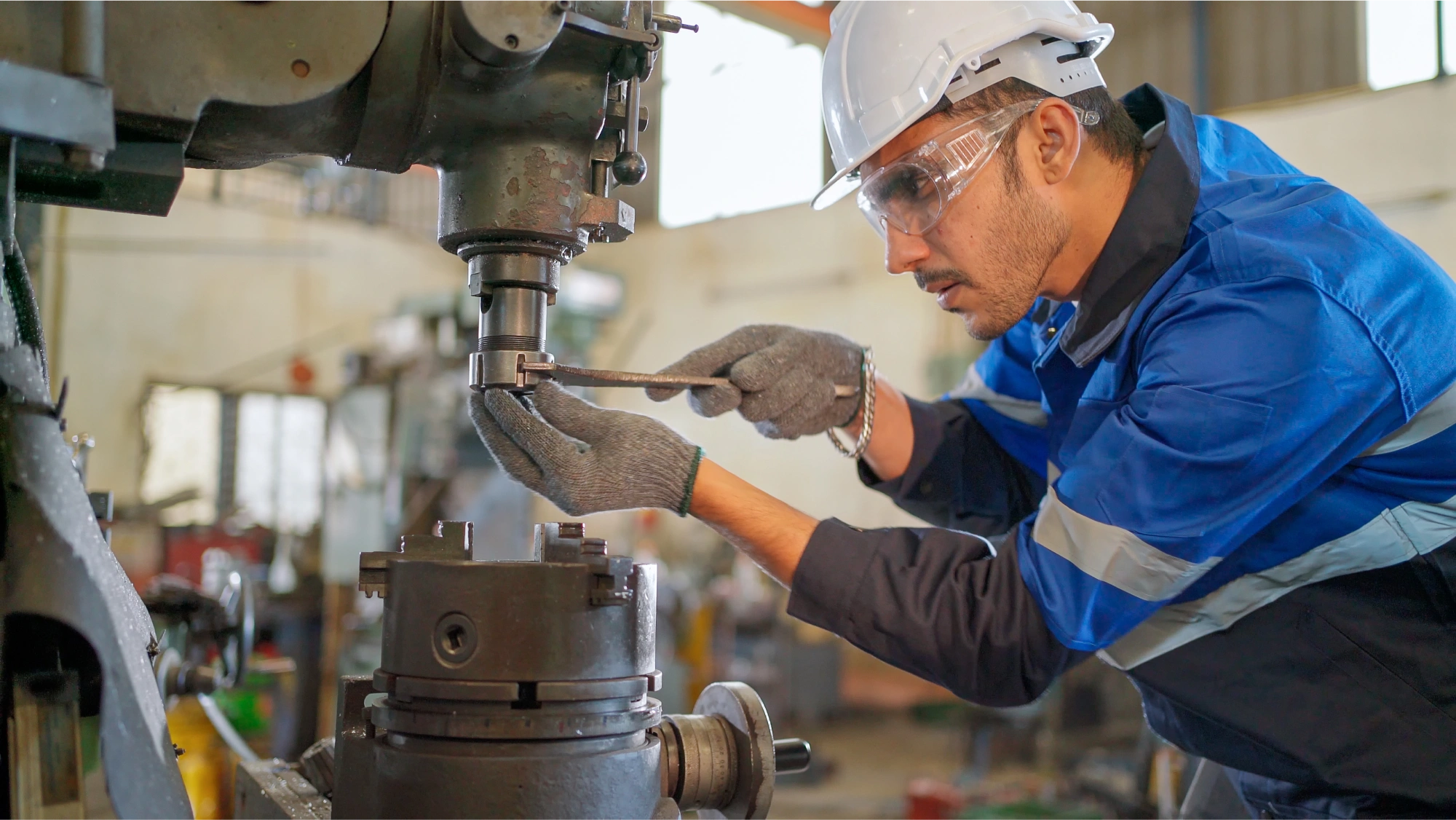Manufacturers everywhere want the same thing: assets that run reliably, produce at peak capacity, and live long, productive lives. At the same time, they're looking to simplify asset management for lean facility teams that are stretched thin. But achieving that ideal state is tough when you're flying blind between preventive maintenance intervals and sudden failures.
If this is where you're feeling hung up, it's time to consider a data-driven approach.
In this post, we'll explain how predictive maintenance (PdM) transforms the entire life cycle of an asset—from installation through decommissioning—by reducing unplanned downtime, controlling maintenance costs, and extending operational life.
What's the core benefit of predictive maintenance?
The importance of predictive maintenance in manufacturing environments—especially those with heavy production demands, harsh operating conditions, tight timelines, and rigorous compliance standards—can't be overstated. For food and beverage, plastics, packaging, chemicals, mining, metals, and other critical industries, unexpected downtime comes at a huge cost.
If you're looking at tight budgets and teams that are spread increasingly thin, you can’t afford emergency repairs or production losses—let alone safety, environmental, or compliance risks.
Predictive maintenance is a proactive maintenance strategy that relies on real-time condition monitoring, oil analysis, and advanced analytics to determine when equipment needs service. Unlike run-to-fail reactive maintenance or routine preventive maintenance, predictive maintenance is based on the actual condition of the asset. This allows you to extract far more value from your maintenance program and your machines.
By scheduling maintenance only when it’s needed, you'll reduce unnecessary maintenance costs while minimizing wear and tear. The result? Enhanced performance, greater reliability, and longer equipment lifespan. Check out these predictive maintenance success stories and notable asset saves.
How does predictive maintenance work day to day?
For maintenance managers, predictive maintenance is about achieving tangible outcomes that impact people and the bottom line. A strong predictive maintenance program that integrates people, processes, and technology makes maintenance management easier and more effective.
Here's what the predictive maintenance process looks like:
- Wireless triaxial vibration sensors provide continuous condition data
- AI-powered PdM software analyzes trends and flags anomalies
- Condition Monitoring Engineers (CMEs) filter out false positives, interpret insights, and provide prescriptive recommendations
- CMMS integrations convert CME recommendations into actionable work orders
Measurable gains include:
- Lower maintenance costs
- Improved maintenance schedules
- Less emergency maintenance work
- Higher team productivity
With predictive maintenance software integrated into a computerized maintenance management system (CMMS), work orders can be generated automatically based on real-time, CME-vetted alerts. This streamlines the maintenance process while ensuring maintenance is scheduled at the optimal time.
How does a predictive maintenance solution extend the asset life cycle?
The value of a PdM program goes beyond ensuring uptime today. It extends the asset life cycle—sometimes by years—helping reduce capital expenditures and free up budgets for other priorities.
Here's how a predictive maintenance approach helps keep assets in peak health and maximize the life cycle:
- Early detection of failures: By catching faults before they escalate, you avoid catastrophic damage.
- Minimized wear and tear: Interventions are timely and precise, reducing stress on components.
- Optimal lubrication and alignment: Condition-based insights ensure critical processes like lubrication are performed exactly when needed.
- Fewer replacements: By keeping assets healthy, you delay costly capital purchases.
Just how much can you extend asset life by shifting to a predictive strategy? Global manufacturer Worthington Steel managed to extend the lifespan of a single gearbox by three years with a simple lubrication fix and achieve 15X ROI. Read their case study here.
How do predictive maintenance techniques improve the typical asset life cycle management process?
Because of the visibility and unique capabilities it offers, predictive maintenance can transform operations starting on day one, driving significant progress on maintenance and organizational KPIs. It touches every stage of the asset life cycle management process, with opportunities for improvement across the board.
Planning/acquisition phase
Improvement opportunity: Include PdM-readiness as a procurement criterion.
- Historical PdM data informs better purchasing decisions
- Suppliers can be selected based on reliability data
- Specification can include built-in PdM capability
Operation phase
Improvement opportunity: Integrate IoT sensors and data platforms for continuous condition monitoring.
- Real-time monitoring improves visibility into asset health
- Early detection of anomalies avoids sudden breakdowns
- Data-driven decisions optimize asset usage
Maintenance phase
Improvement opportunity: Use AI/ML models on sensor data to predict failure modes and plan targeted interventions.
- Shift from reactive/preventive to condition-based/predictive
- Reduce unplanned downtime
- Extend mean time between failures (MTBF)
- Lower maintenance costs by targeting interventions only when needed
Upgrade/modification phase
Improvement opportunity: Prioritize retrofits where PdM potential ROI is highest.
- Assets can be retrofitted with sensors for PdM
- Upgrades can focus on areas with high failure rates identified by PdM analytics
Decommissioning/replacement decisions
Improvement opportunity: Use condition-based replacement planning rather than purely age-based.
- Asset health data helps decide optimal replacement timing
- Avoids overextending worn-out assets or replacing too early
Adopting predictive maintenance across the asset life cycle enables smarter, data-driven decisions—key to unlocking the many benefits of a condition-based approach. Our recent white paper Succeeding with Predictive Maintenance explains how you can calculate your PdM gains and increase your returns over time. Download a copy today.
Bottom line: condition monitoring and predictive analytics are essential for asset life cycle management
Predictive maintenance is more than a maintenance technique—it’s an essential strategy for asset management and maximizing the life cycle of your equipment. Using predictive maintenance technologies, you can:
- Reduce unplanned downtime and maintenance costs
- Extend asset life through timely, targeted interventions
- Avoid unnecessary maintenance work and spare parts waste
- Optimize maintenance schedules
- Enhance safety, sustainability, and profitability
By moving from reactive or purely preventive maintenance to a predictive type of maintenance strategy, you can transform your operations from chaotic to controlled, and from inefficient to optimized.
The shift to predictive is simple with a managed service model that bundles hardware, software, and expert support into a low monthly subscription with no CapEx burden. Dedicated CMEs help maintenance teams day to day with onboarding, interpreting data, and prioritizing risks.
Get the keys to predictive maintenance program success
If you’re ready to explore how predictive maintenance can simplify your life, reduce maintenance costs, and extend asset life, register for our July 22 webinar, Chaos-Free Condition Monitoring: The Proven Path to Predictive Maintenance Success. You'll learn from industry experts how you can implement predictive maintenance the right way—and see for yourself how it can transform your entire maintenance program. Save your seat today.



.avif)




.png)
.png)
.png)

.png)






